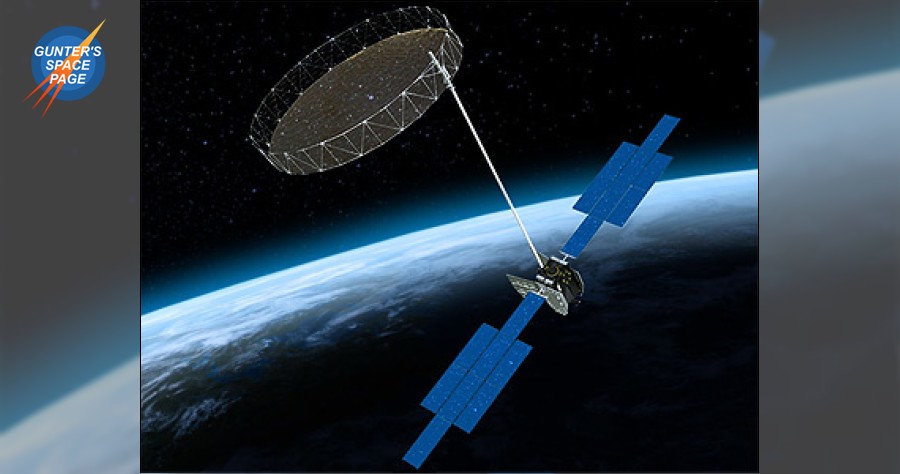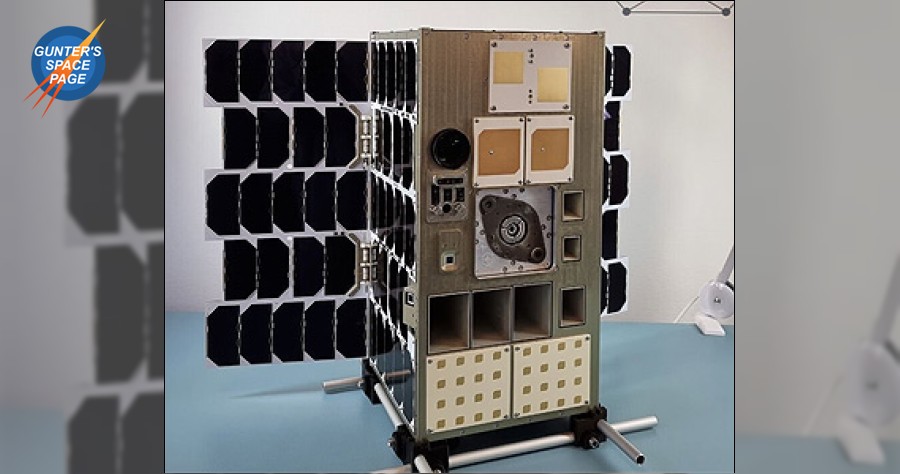Launch Date: April 30
Launch Window: 7:29pm EDT (4:29pm PDT, 23:29 UTC)
Launch site: LC-39A, Cape Canaveral, Florida
Side Booster Recovery: N/A Expended
Core Booster Recovery: N/A Expended
Boosters: Side Boosters: B1052.8 and B1053.3 Center Core: B1068.1
Mass: 6,400 kg ViaSat 3 and 300 kg Arcturus
Orbit: GEO (Direct)
Yearly Launch Number: 29
A SpaceX Falcon Heavy rocket will launch the ViaSat 3 Americas broadband communications satellite. ViaSat 3 Americas is the first of at least three new-generation Boeing-built geostationary satellites for ViaSat. A small communications satellite named Arcturus will launch as a secondary payload for Astranis. A third cubesat will also be deployed: Nusantra H-1A at 22 kg. This mission will directly inject the satellites to geostationary orbit, thus the core and side boosters are all expendable alongside having the sixth second stage featuring Falcon mission-extension kit.
The entire stack for this launch will be expended. A first for Falcon Heavy.


 space.skyrocket.de
space.skyrocket.de

 space.skyrocket.de
space.skyrocket.de

"SpaceX Falcon Heavy Blastoff (1 of 7)" by jurvetson is licensed under CC BY 2.0.
Admin note: Image added for Blog Feed thumbnail
Launch Window: 7:29pm EDT (4:29pm PDT, 23:29 UTC)
Launch site: LC-39A, Cape Canaveral, Florida
Side Booster Recovery: N/A Expended
Core Booster Recovery: N/A Expended
Boosters: Side Boosters: B1052.8 and B1053.3 Center Core: B1068.1
Mass: 6,400 kg ViaSat 3 and 300 kg Arcturus
Orbit: GEO (Direct)
Yearly Launch Number: 29
A SpaceX Falcon Heavy rocket will launch the ViaSat 3 Americas broadband communications satellite. ViaSat 3 Americas is the first of at least three new-generation Boeing-built geostationary satellites for ViaSat. A small communications satellite named Arcturus will launch as a secondary payload for Astranis. A third cubesat will also be deployed: Nusantra H-1A at 22 kg. This mission will directly inject the satellites to geostationary orbit, thus the core and side boosters are all expendable alongside having the sixth second stage featuring Falcon mission-extension kit.
The entire stack for this launch will be expended. A first for Falcon Heavy.


ViaSat 3.1, 3.2, 3.3 (ViaSat 3 Americas, APAC, EMEA)
The ViaSat 3 series of high capacity broadband satellite for ViaSat Inc consists of three satellites for global coverage.

G-Space 1 (GS 1, Nusantara H-1A)
G-Space 1 is a geostationary 16U CubeSat by Gravity Space hosting several payloads for different customers including Earth observation, scientific ...
"SpaceX Falcon Heavy Blastoff (1 of 7)" by jurvetson is licensed under CC BY 2.0.
Admin note: Image added for Blog Feed thumbnail
Last edited by a moderator:


